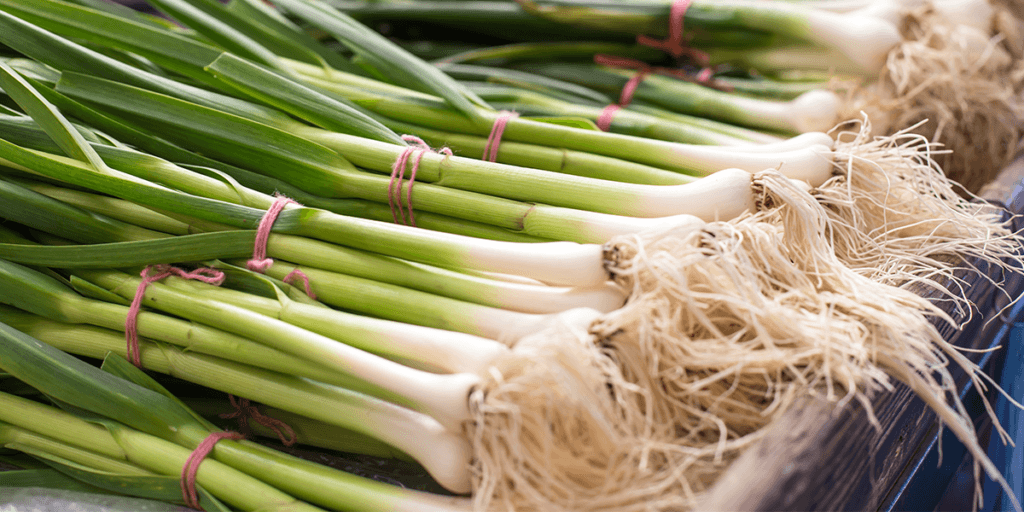
By Angelo Randaci, Earth’s Ally Horticulturist
Angelo’s passion for plants has led him to explore many areas of horticulture including research, grounds management, technical training, design and nursery management.
Angelo’s Grocery Store Hack
My mother made the best spaghetti sauce from a recipe used as a girl in Sicily. She started with thick sauce from tomatoes grown in our garden. As she cooked down the tomatoes into sauce, she added handfuls of fresh herbs: basil, thyme, savory, and parsley. Our family loved having fresh herbs straight from our garden from spring right through fall. There is nothing like fresh herbs for cooking. The aroma of the herbs filling the air as they begin to blend is exquisite. Experiencing all these fragrances together is the best part of cooking, so having a kitchen herb garden is one of the best things a cook can do to flavor up their dishes. With herbs grown in containers lining a patio, or raised beds and garden rows, you will expand your recipe palette with a substantial variety of readily available flavors. It is possible to enjoy a selection of fresh herbs throughout the winter months as well, from fresh herbs you can find at most grocery stores. Following just a few simple steps, you can successfully grow an array of delightful herbs.
How to Propagate Herbs
Of all the propagating techniques, rooting cuttings in water is the easiest method, especially for beginners. This method works particularly well for soft-stemmed herbs. Simply follow these easy steps.
First gather your tools and choose your containers. All you need is a pair of sharp scissors or other sharp cutting tool, rubbing alcohol to sanitize your tools prior to using and when finished, clean water and a collection of bottles or jars. When rooting cuttings in water, it is best to use either a dark colored bottle or cover a clear glass bottle with dark plastic. Using dark bottles along with changing the water in the bottle every few days, will keep algae from growing in the water. The dark bottles mimic underground conditions, where roots live.
Among the easiest herbs to grow in water are plants with tender herbaceous stems as opposed to stems that have gone woody with age. The list of easily rooted herbs includes basil, mint, rosemary, oregano, pineapple sage, lemon balm, and winter savory.
Once you have containers, it’s time to buy your herb cuttings at your local grocery store. Look for packages that contain healthy, long, green stems. Avoid bunches with woody stems, dried up or blackened leaves.

Prepare your cuttings immediately after getting them home. After cleaning and sanitizing your cutting tool, take a stem cutting (make a fresh cut) 3 or 4 inches long depending on the size of your container. Remove leaves from the lower two-thirds of the stem.
Make an angled cut, just below a leaf node. The leaf node is where the leaves join the stem of the plant. You want to do this for all your cuttings. See the image above for reference.
Put cuttings in your container filled with clean water keeping the leaves above the water level and place in an area receiving bright light. Change water every few days.
Easy Herbs to Propagate
Basils: This includes all the basils. Some, such as Thai basil, may be difficult to find in the grocery store, but you can find bunches in your local Asian market. Stem cuttings will root easily in water either from a plant you purchase or pack of fresh herbs. Make sure you purchase basil with stems because the leaves alone will not root.
Mints: All mints including spearmint, peppermint, lemon balm, and catmint will root easily in water. I like to throw in a few fresh mint leaves with my tea bag. As a treat for your kitty, you can grow catnip the same as the other mints. The mints are perennials and will grow back from the roots every year. Mints can be invasive outdoors so best contain your plants with a barrier to keep runners from traveling throughout your garden.
Chives, garlic chives, garlic, and spring onions: This group of plants are grown from bulbs rather than cuttings. Look for bulbs with roots still attached to the base in the organic produce section of your local store.
Snip off the leaves to about three inches above the bulb. Place in container and add water. Keep the water line halfway up the bulb. Cut fresh leaves from new growth as needed. Plant bulbs outdoors in the spring in the herb garden, vegetable garden, or anywhere in the landscape. They are hardy perennials and will come back every year. They provide abundant edible flowers outdoors and as a bonus attract pollinators.

Tips for Growing Herbs Indoors:
- Handle your cuttings carefully when stripping lower leaves. Pull too hard and you may break the stem. Scissors work well for removing leaves without breaking stems. Take a few cuttings because some may not root.
- At some point, your herbs should be transplanted into a potting soil so they can receive nutrients needed for sustained growth. Potted herbs in the spring will be ready to plant outdoors when soil temperatures warm after danger of frost.
- Your kitchen herbs will grow well under artificial lights all winter.
- Keep an eye on pest problems that may arise. Earth’s Ally 3-in-1 Plant Spray controls bugs and common diseases. The formula is for organic gardening and can be applied to herbs up until the day of harvest.
- You can also purchase “living herbs” from your supermarket. These are fresh herbs with roots attached, sold in small containers. They consist of multiple seedlings in a bunch and should be divided. Gently pull the root ball apart leaving each division with three or so plants. Transplant them in fresh potting soil immediately after purchase. Keep them in bright light until they can be moved to the garden.
- Herbs such as the basils and summer savory are annuals and will not return after one season in the garden. Take cuttings while the plants are still healthy before the end of the growing season to grow indoors. Experiment with this technique on different plants from your garden, both indoors and out.
We’d love to hear how Earth’s Ally is helping you grow healthy herbs! Share your experience and stay connected with the #EarthsAlly community on Facebook, Instagram and Twitter for access to our latest blog posts, giveaways and exclusive promotions.
